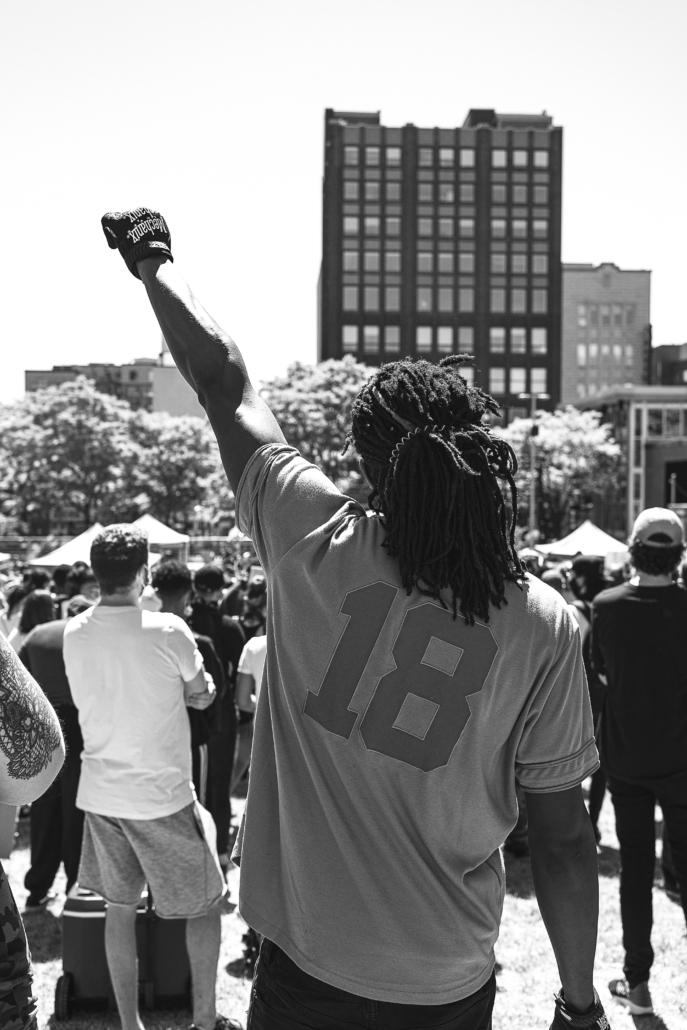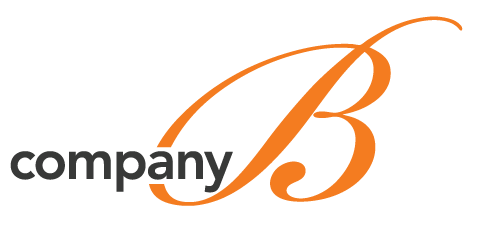The Secret Code to Brand Messaging
/in Blog /by Bonnie Rothman
The last time you were featured in the press, or were introduced in a podcast, did you like how your business was described? If what they said about you was all wrong, chances are your message about your brand isn’t clear.
The media’s job is to make readers and listeners’ understand their story, not yours. If the way you describe yourself is wordy, jargon-filled or too lofty, your interviewer will find a simpler way to say what you do and who you are and why you matter. When I wrote about technology for the New York Times, that’s what I did.
Know What You Stand For
Getting clarity about your brand isn’t always easy. You can’t be everything to everyone and you can’t use jargon to suggest otherwise. You have to know what you stand for and say it, plainly.
Saying what you do best doesn’t require learning how to use a new dashboard, struggling through fresh analytics or mastering the art of looking animated on Zoom. The skills that get you from fuzzy to precision are ones you already have. Start with scrutiny. Examine every single word of your brand story.
The Best Tips for Clear Brand Messaging
To get your message across the way you want, follow advice from George Orwell. Yes, that George Orwell, author of 1984 and a fabulous essay on writing well called “Politics and the English Language.” It’s a must-read for anyone who writes.
“A scrupulous writer, in every sentence that he writes, will ask himself:
➢What am I trying to say?
➢What words will express it?
➢What image or idiom will make it clearer?
➢Is this image fresh enough to have an effect?
And he will probably ask himself two more:
➢Could I put it more shortly?
➢Have I said anything that is avoidably ugly? “
Follow these rules and I’ll bet you get described the way you want the next time you get featured in the press.
Is your brand message clear or do you think it needs more work?
If you need help getting your brand story straight, reach out for my 30 minute STORY BOOSTER session. You’ll get one actionable idea. And clarity!
Marketing leaders: Show What you Stand For
/in Blog /by Bonnie RothmanAs we head into 2021, marketing leaders, are you ready to ready to prove how you’re making a difference?

Through this year’s uncertainty, there’s one constant: people want to do business with brands that are committed to doing good in the world.
I’m so heartened by this change.
“First, it’s up to you to take purposeful action to make a difference, then you’ll have to prove how you’re acting to make good on your promise.”
First, it’s up to you, marketing leaders, to take purposeful action to make a difference, then you’ll have to prove how you’re acting to make good on your promise. The challenge is sharing your mission without bragging or being inauthentic.
Here’s a hint: when you tell a story about your cause, include your people.
Start by telling a story about how you’re making a difference and find a person or two who are living your mission. Look for inspiration by following the example of companies that have been doing this for way longer than the 6 months that we’ve been in the pandemic such as Patagonia, Ben & Jerry’s, Chobani and Salesforce. How has their commitment to do better in their slices of the world made a difference in the lives of people who interact with the brand?
For some ideas, my strategic partner, Judy Kalvin, and I share three secrets and stories to show how we’ve put people in the center of B2B storytelling in the Marketing Smarts Podcast “How to Humanize Your Brand Storytelling.“
Take a listen and you’ll learn:
? How to make thought leadership more helpful
? How to turn your founder story into one of your biggest assets
? How to use employees as characters to tell the story of your purpose
Let us know what you think.
And, if you want to find out how to tell a story that makes your brand more personal, reach out.
Photo by Mélodie Descoubes on Unsplash
A WFH Dress Code
/in Blog, Marketing, Public Relations, Storytelling /by Bonnie RothmanAbout three weeks ago, one of my clients was interviewed by a reporter at The Atlantic for a story about dress codes in the workplace. I was thrilled at our opportunity to be included in the story. Dress code? Now that many are working from home what does that even mean now?
I’m one of the lucky ones. I’ve worked from home on and off throughout my career. I made the transition during the dial-up internet era, when I began each workday twiddling my thumbs through a chorus of bings and bongs waiting to get online. When I started my virtual agency I made an agreement with myself to maintain “office hours,” which included following a daily schedule and sticking to a few self-imposed rules about what could get done during that time (no household chores and no novel-reading, for example). So when the world as we know it shifted in a matter of days, I was ready. Or so I thought.
One of my self-imposed rules required that I follow a dress code. I had a daily routine: put on makeup and dress in what was once called “casual Friday” outfits. No workout clothes or sweatpants during the workday for me. This was a practical decision. Most days, I’d have to head out for a meeting, a need-it-now media training, a quick brainstorm or networking lunch. Now that in-person meetings are on hold, I haven’t given up. Makeup helps me look good on Zoom, and I really like mascara, so during the first week of self-quarantine, I put on makeup every day and wore my work uniform of cashmere sweaters, skinny jeans and a fantastic pair of combat boots I picked up in Barcelona while I was teaching there in January (a century ago, it seems).
Then, I read about people who are dressing for work from the waist up, and wearing shorts or pajama bottoms from the waist down. Since we were all sent home to work, Walmart has been selling lots of shirts, not bottoms, apparently. I just can’t do that. I like whole outfits too much. But by week two, I noticed that my wardrobe had shifted stealthily. Pre COVID-19, I used to exercise early in the morning so I could arrive at my desk when everyone else did. But now that my colleagues have permission to take exercise breaks during the day — to walk their dogs, help their kids with algebra, meditate to take care of themselves — I’m scheduling my workouts at random hours, in between Zoom meetings and work deadlines. I’m, ugh, working in workout clothes, and not my best outfits, either. I’m reaching for my old standby black Lululemon leggings and not-so-flattering sports bras that I should have tossed last year. These outfits are not chic athleisure, and definitely not streetwear (that’s not my style jam); nevertheless, my new work wardrobe is an incentive to hop on my bike or my yoga mat and fit in a workout when I can. They work for me right now, keeping me sane during this scary, crazy time.
Naturally, we’re being encouraged to make the shift by fashion brands. In the weeks since we’ve been on lockdown, my social media feed has been filled with ads for comfy-wear from brands like Joie and Nili Lotan. Influencers like Danielle Bernstein and others are posing in sweats. A CEO client who has a fabulous wardrobe of business menswear has been wearing baseball caps and hoodies on our weekly Zoom calls. I miss the fashionable people’s take on “real” style. Fancy sweatpants aren’t aspirational to me. Others are finding their own route to workplace style. I was thrilled when novelist Curtis Sittenfeld wore her wedding dress to work from home, showing us all how it’s really done. I like the wedding dress idea better than being halfway dressed. And, now that I’m sitting here, looking at it closely, I really should toss that sports bra. Maybe tomorrow I’ll dig up a tiara and change my dress code, again.
Has Brand “Engagement” Gone Too Far?
/in Blog /by Bonnie RothmanKit Kat, the candy bar, got rave reviews in the marketing trades (https://www.thedrum.com/news/2018/07/10/how-kit-kat-managed-turn-viral-tweet-branded-proposal) for helping a guy propose to a gal using props supplied by Kit Kat.
In May, the gal posted a photo on Twitter to prove that her boyfriend was clueless when it came to eating a Kit Kat bar. He had chomped into it without breaking it in half first. The tweet racked up thousands of comments. Kit Kat took to Twitter and joined the conversation. Next, the brand, and I’m quoting directly, “developed an internal relationship” with him. I guess that means a bunch of emails were exchanged.
So, when the guy, wanted to pop the question to the gal, he asked Kit Kat for help. After all, Kit Kat had made him famous. His Twitter shame conferred influencer cred that made him adorably, clumsily lovable, and worthy of a “yes,” from his girlfriend. After a quick discussion, the candy company produced an engagement ring box that looked like a Kit Kat. When opened, it appeared to be “broken apart.”
Today, we can all be the stars of our own digital lives, particularly at its most intimate moments. Engagements and weddings must be documented on your wedding website and Instagram feed, and, to make sure that your older relatives know what’s what, you’ve got to maintain your Facebook profile, too. Bonus points if you can get a brand to sponsor some of your posts to offset the costs of your wedding. They’re out there, waiting for you
The candy car brand manager is quoted as saying: “Our brand is really all about providing breaks, and we want to advocate for breaks. Giving Evan (our man on Twitter) a break just fit in really nicely.” The brand manager also said he helped to keep the moment “authentic,” by not inviting TV crews to cover the proposal. Then he said the PR was cheap – reckoning the total cost at $2000. I think Kit Kats cost about two bucks. Just saying.
Brand authenticity is killing your most private and personal moments. And it’s not the brand’s fault. Marketers are just doing their jobs – really, really, well. It’s not surprising that Kit Kit chimed into Twitter conversation. Brands are primed to listen and respond playfully to positive comments about them. The social media team would be “tsk-ed, tsk-ed” if they didn’t. It’s also not a stretch for the brand’s marketers to consider extending the conversation, turning the candy faux-pas into a campaign to find other people who never ate a Kit Kat and therefore don’t know that you get maximum deliciousness by breaking it in half for the best ratio of crunchy wafer to creamy chocolate. If I were on the Kit Kat marketing team, I would certainly be thinking about how I could turn that viral second into an hour or two of attention online and in the street. I can also see how the campaign could include a role for the first guy on the planet who didn’t know how to eat the candy.
But, the article said that the guy reached out to Kit Kat when he wanted to propose. That’s what floored me. The unintended influencer turned into the “even my engagement is for sale” huckster.
Last month I read that couples that met on Bumble and Tinder used the brands in their weddings. A couple that met on Bumble had a Bumble executive officiate their wedding. When we invite “brands” to sponsor our most intimate moments, they become baked into our life stories, and the brands risk becoming more important than the dizzying, wonderful, burned-into-your-brain moment itself. I want you to marry me – and eat a Kit Kat. After all, everybody deserves a break.
Maybe the break we all deserve is one from social media. Take a break from social media, and vow to cherish those special moments as they happen in real time, unmarred by commerce, for the intimate, beautiful, personal ones that they are.
Lessons for Public Relations People
/in Blog /by Bonnie RothmanI confess. I have only caught snippets of AMC’s new show, “The Pitch,” a reality show where two advertising agencies compete for business within a one-week window. For my weekly entertainment, I’d rather enjoy the mock-pitches dreamed up by the writers of “Mad Men.” As a creative PR and social media agency, “The Pitch” cuts too close to the bone. I’m afraid my heart would race in empathy with the competitors throughout each episode.
The one snippet I did manage to catch was the end of the Subway pitch episode. I heard what I assumed to be the head creative guy bid farewell to the potential client by saying, “We had a blast working on this.” The potential client gamely replied (I’m paraphrasing) “We’re glad you had fun.”
I knew that agency was doomed. I was right.
So, after I watched all of this week’s addictive “Mad Men” content on amctv.com, curiosity got to me and I clicked on a segment featuring the CMO of Subway explaining “Why they won.”
What I learned from the two-minute web video was something that I thought I already knew but is worth keeping in mind, for those of us who spend a lot of time pitching. Even though the brand may ask for a big idea (they always ask for a big idea, right?) what they really want is a big relationship with you. They want to like your agency (consultancy, freelance singleton) a lot – and they need to like your really good idea enough that they can see its potential.
At the end of the pitch, it’s not necessarily the idea that will win you the business. A brand wants to buy your story about them — the way you tell it demonstrates your potential as a business partner.
How to do that? Start by showing how much you understand them. Their business, their competitors, their customers, their pain points. Then, before even sharing your idea, use your insights to take them to a place that they haven’t been before, but that still feels familiar to them. Color too far outside the lines and you risk them thinking that you don’t “get” them.
During the pitch, they don’t know you, so be explicit. Explain how you figured things out. Preferably, you did more than web research and got out and talked to people for insight. Share what you’ve learned.
Save those big ideas for last. You’ve got a seat at their table, so they already know about your good work. Now that they’re meeting you when you’re supposed to be at your best, they’ll also think that you’re smart. And because you’ve laid the groundwork, the insights will ensure that your big creative idea will be good and maybe even great.
Then, at the end of the hour, thank them for giving you the opportunity to think about their brand. Not because it was a blast for you, but because their brand is now already yours, too, and you will give it the fullest measure of your time and attention in your journey to tell their story.



